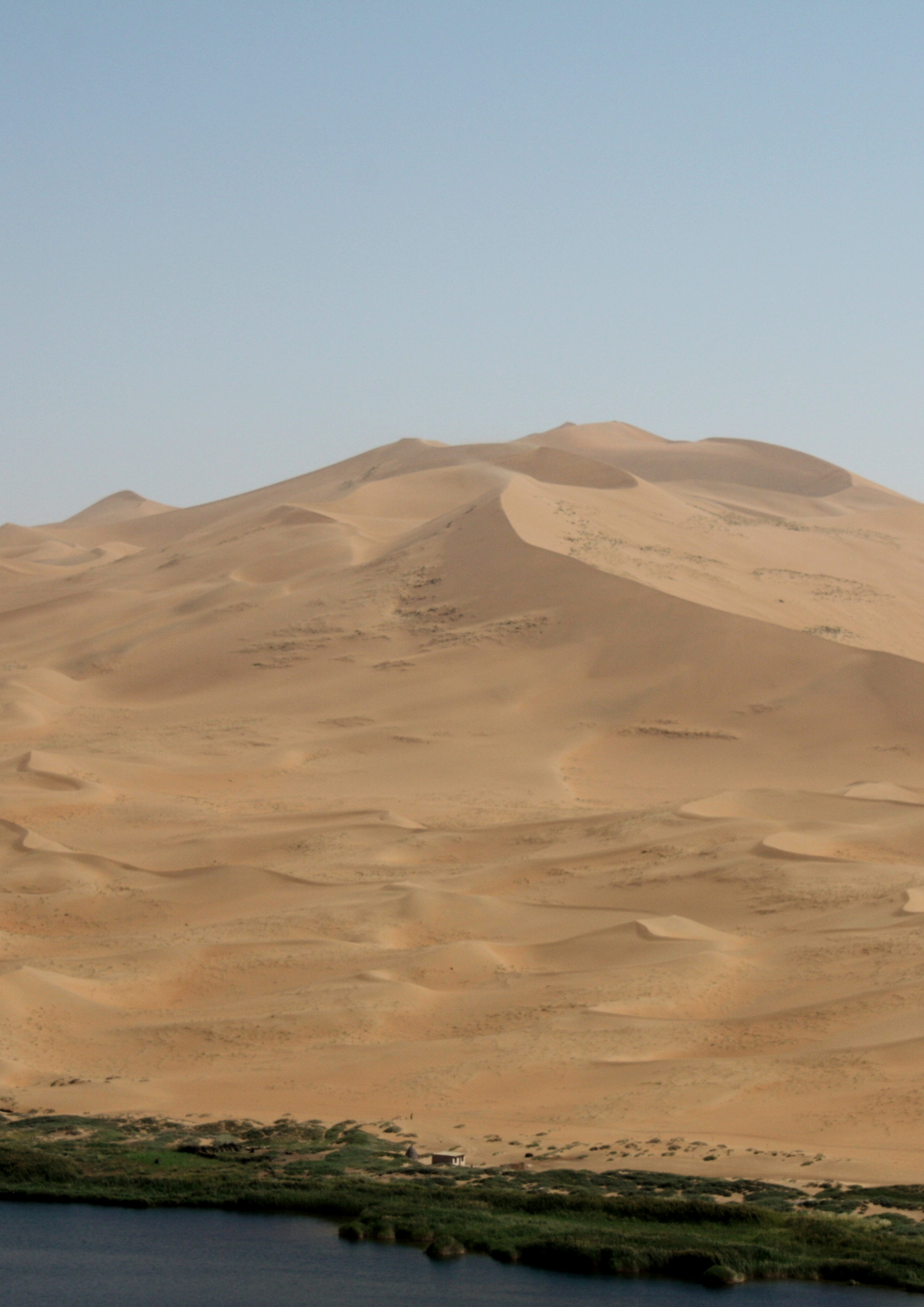Super-Sized Sandbox Reveals How Dunes Grow


On a cold winter day in December 2007, a bulldozer flattened nearly 40 acres (16 hectares) of Inner Mongolia's Tengger Desert. It was the start of a unique experiment: For the first time, scientists would watch Earth's winds give birth to dunes.
Four years later, results from the giant Mongolian sandbox confirmed long-held models of sand dune formation, according to a study published today (Jan.12) in the journal Nature Geoscience.
Under the influence of the desert's seasonally varying wind patterns, which blow from the southeast and the west, the dunes grew at an angle of about 50 degrees to the overall wind direction. The dunes' alignment initially shifted back and forth with the changing winds, eventually converging to an average between the two wind patterns, the researchers found.
"It was very exciting when we realized that with the two wind directions we were getting a dune orientation that was oblique," said Clément Narteau, a study co-author and geomorphologist at IGP Paris. "It was quite fascinating to see that. It was just a pleasure to see that this kind of experiment can produce the expected results."
Modeling a messy world
While confirming a theory may seem like small potatoes to some, scientists who study dunes are thrilled by the results.
"They've done something quite brilliant," said Douglas Jerolmack, a geophysicist at the University of Pennsylvania, who was not involved in the research. "It's the kind of result that says our theoretical understanding is actually validated in the natural, messy world." [Sand Scenes: California's Shifting Dunes]
Get the world’s most fascinating discoveries delivered straight to your inbox.
Dunes are one of the most difficult landscapes on Earth to re-create in a lab, Jerolmack said. Properly building a model means accounting for the full distance wind needs to pick up all the sand it can carry, typically hundreds of feet.
"At a minimum you need a wind tunnel hundreds of meters long, and it quickly becomes impractical to study dunes in a lab," Jerolmack told LiveScience's OurAmazingPlanet.
So scientists have relied more on math than miniature-scale dunes to explain how these spectacular landscapes form. But testing such models still remained a critical hurdle, because the massive sand piles hold key clues to climate on other planets and moons, as well as in Earth's past. The alignment of dunes reveals wind patterns in places where no other weather data exists.
"Results of this work — like the previous studies on this topic — are useful for interpreting a variety of modern bed forms on Earth (including eolian dunes, wave ripples, tidal sand waves), eolian dunes on Mars and Titan, and sedimentary rocks deposited by such bed forms," said David Rubin, a sedimentary geologist who was not involved in the study, in an email interview.
Rubin and colleagues at the U.S. Geological Survey developed the dune-formation model tested in the Mongolian dune study (called maximum gross bedform-normal transport).
Big sandbox
To link theory with the real world, Narteau and his collaborators at the Cold and Arid Regions Environmental and Engineering Research Institute in China decided to create their own dunes. They were testing what happens when dunes arise under seasonal wind conditions, which blow in different directions in Inner Mongolia's summer and winter. The model predicted dunes angled somewhere between the seasonal winds.
The team beveled three patches of desert. One bed was open to new sand, one was closed to incoming sand, and one was covered in gravel to prevent sand erosion. From the start, the dune crests, the tallest part of the dunes, were about 75 feet (23 meters) apart, a characteristic wavelength that stayed the same through the years. After a few years, the crests were angled about 50 degrees from the winds, as predicted by Rubin's theory.
"This is the validation of a theory that constrains the climate properties of dune formation," Narteau said. "The idea of flattening the desert to relate dune topography to wind is simple, but the simple idea is always the best."
The researchers plan further desert-flattening experiments to measure how quickly dunes grow and how that relates to wind speed. "We would like to get more into the details of the physics of sand dunes," Narteau said.
Email Becky Oskin or follow her @beckyoskin. Follow OurAmazingPlanet @OAPlanet, Facebook and Google+. Original article at LiveScience's OurAmazingPlanet.




